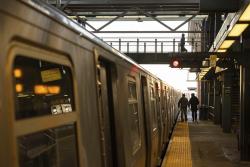The B-1B is expected to remain a top-tier bomber for years to come.
One of the US Air Force’s B-1B bombers was dispatched to Norway as part of the latest Bomber Task Force Europe. The Lancer arrived at Orland Air Base to take part in a deployment intended to aid American aircrews’ coordination with allied nations through joint exercises. As part of the NATO drills, the Lancer aircrews will carry out collaborative training missions with their foreign partners to ensure readiness in an increasingly hostile threat environment. In a press release, Lt. Col. Eric Alvarez, 345th Bomb Squadron deployed commander, stated that “This deployment allows us to train the way we fight — integrated with our NATO Allies, ready and adaptive. It’s about building experience and trust together, enhancing readiness, and staying sharp in dynamic environments.”
Introducing the Lancer
As a product of the Cold War, the Rockwell B-1 is one of the oldest platforms to continue to fly for the Air Force. Despite its age, the formidable supersonic heavy bomber remains a lethal deterrent to American adversaries. The legendary bomber was conceptualized in the aftermath of World War II. The Air Force at the time required a new bomber platform capable of delivering the hefty payload of the B-52 Stratofortress and the top speed of the B-58 Hustler. While the B-70 Valkyrie was designed to fulfill this role, the Soviets’ advancing surface-to-air missile power was becoming a greater threat to high-altitude aircraft. Specifically, the downing of the U-2 Dragon Lady piloted by Gary Powers in 1960 over the USSR encouraged the service to go in a different direction.
When Richard Nixon took office as president in 1969, he reinstated the Advanced Manned Strategic Aircraft program, which was subsequently renamed the B-1A program. Manufacturer North American Rockwell was tasked with designing and developing the new bomber. Ultimately, however, the B-1B that we know of today would not come to fruition until the early 1980s under the Ronald Reagan administration. While the platform retained some of the qualities of the B-1A iteration, the B-1B was altered to be less pricey to produce. As detailed by the Air Force, “an additional structure to increase payload by 74,000 pounds, an improved radar and reduction of the radar cross-section by an order of magnitude. The changes led to a reduction in maximum speed to Mach 1.2.”
Over the years, multiple upgrade packages were incorporated into the Lancer in order for the bomber to retain an edge over near-peers in the modern era. From radar sustainability and electronic countermeasures to payload capacity and cockpit enhancements, the B-1B is expected to remain a top-tier bomber for years to come. Today, the B-1 can carry up to two dozen Joint Air-to-Surface Standoff Missiles (JASSMs) or Long-Range Anti-Ship Missiles (LRASMs) internally. The latest modifications that are in the works could allow the bomber to carry 12 more of these missiles with the addition of six load-adaptable modular pylons.
About the author: Maya Carlin
Maya Carlin, National Security Writer with The National Interest, is an analyst with the Center for Security Policy and a former Anna Sobol Levy Fellow at IDC Herzliya in Israel. She has bylines in many publications, including The National Interest, The Jerusalem Post, and The Times of Israel. You can follow her on Twitter: @MayaCarlin.
Image: DVIDS.

















